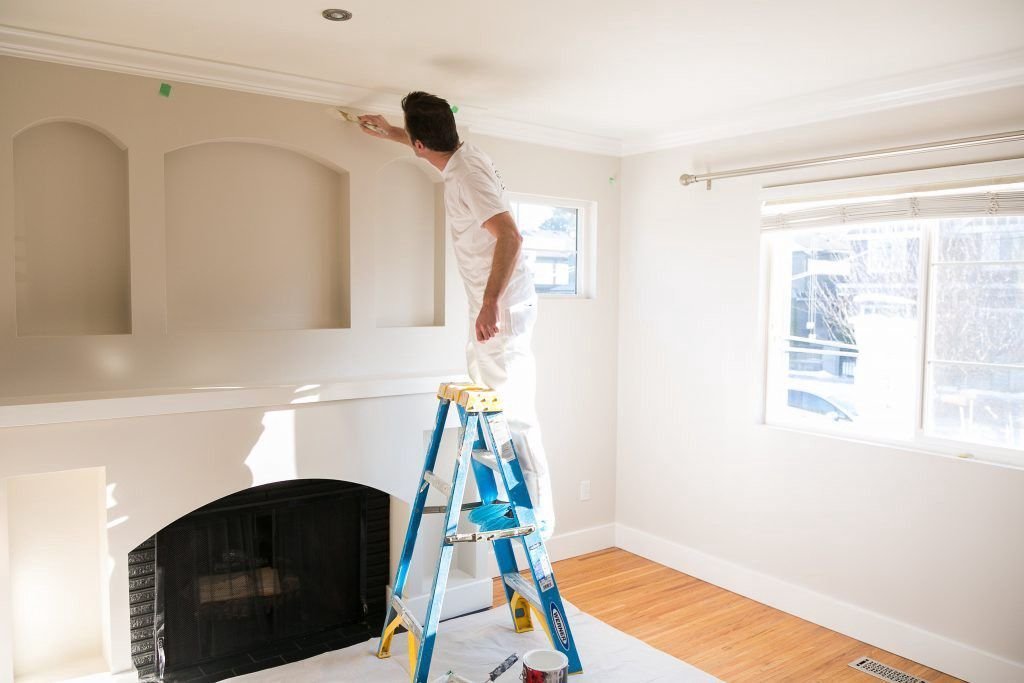Introduction
It will greatly improve its look and feel, increase the value of your property, and protect its surfaces. Here’s a step-by-step guide on everything you need to know about painting the inside and outside walls of your home.
The Benefits of Interior Painting
Interior & exterior painting doesn’t just refresh your home aesthetically; it also improves air quality by sealing out dirt, dust, and allergens. Using low- or zero-VOC paints can reduce indoor toxins, creating a healthier space. A fresh coat of paint can also increase property value by giving rooms a modern and clean look.
The Benefits of Exterior Painting
Exterior painting will help protect the house from the elemental path of weather, mold growth, and pests. Good exterior paints additionally provide protection for UV rays and fading. Among these useful functions, it gives your home a fresh look that may help evoke an excellent first impression in visitors or raise its resale value.
Choosing the Right Paint for Interiors
Interior paint comes in many sheens-matte, satin, and semi-gloss, to name a few. Matte is very good for concealing imperfections, but satin and semi-gloss are generally easier to clean. Choice of colour is very important, and you would want to ensure that the rooms in your house or apartment feel larger and airier than dark colours would. If you really want warmth and coziness, you might use darker colors in certain areas of the house. Consider the whole color harmony in the house for a consistent look and feel.
Choosing the Right Paint for Exteriors
The environmental elements must also be endured by the exterior paint. Acrylic-based paint is the most preferred type due to durability, flexibility, as well as resistance to fading. Remember to ensure that the color of the paint complements the architecture as well as your property’s landscape. Classic neutrals include grays, tans, and whites, while bold colors make a statement. Always test a small patch for your chosen color to ensure it looks good in different lighting.
Preparing Interior Surfaces
Proper preparation will guarantee the finishing process to go long-lastingly and smoothly. Walls can be cleaned to remove dust and grease, holes and cracks filled, and rough spots sanded. Primer can be applied for that even base level, especially on new or bare surfaces. It makes the paint stick out better and also the vibrancy of colors is highlighted.
Preparing Exterior Surfaces
Clean the exterior by pressure washing off dirt, mildew, and old paint. Scrape the loose paint off, sand rough spots, and fill in holes and damaged surfaces. Priming the exterior surfaces is essential. Areas that are exposed to weather conditions, especially extreme ones, require priming. Primer can seal porous surfaces to prevent moisture from being absorbed into the walls.
Tools Needed for Interior Painting
Basic tools for interior painting include brushes, rollers, painter’s tape, drop cloths, and paint trays. Rollers are ideal for covering big spaces but are pretty fast while brushes are used for edges and trims. Painter’s tape is very important for creating sharp edges, while the drop cloths are used to protect furniture and floors from splatters.
Tools Needed for Exterior Painting
Exterior painting may occasionally need specialized additional tools: ladders, extension poles, and good brushes and rollers for rough surfaces. There are also power washers, scrapers, and sanding equipment in the prep work. Investment in durable equipment ensures greater efficiency and much better overall painting.
Tips for a Professional-Looking Interior Paint Job
For a clean finish, wet edges and smooth strokes avoid lap marks. Additionally, to prevent drips on fresh paint on the walls, painting from the ceiling down helps avoid drips on freshly painted walls. Edges and trim should be painted with a brush, and bigger areas can be filled in with a roller. Two coats generally yield the most pleasing appearance for deep, rich, even color.
Tips for a Professional-Looking Exterior Paint Job
Paint your exterior walls of the house whenever it’s in fine weather. Avoid painting in the sun, wind, or rain because paint tends to dry unevenly. For more durability, use two coats, always applying from top to bottom. Paint corners and edges carefully along with trims as much as possible for a fine, professional finish.
Maintaining Painted Surfaces
Proper maintenance extends the life of your paint job. For interiors, clean walls gently with a damp cloth to remove dust and stains. Avoid harsh scrubbing. Exteriors require periodic washing to remove dirt and mildew. Regular inspection can help spot early signs of peeling or fading, allowing for timely touch-ups.
How Often Should You Repaint?
The interior walls typically need to be repainted every 5-7 years or more according to room use and paint quality. The more traffic or usage, the higher the frequency of updates in rooms like kitchens and bathrooms. Exterior surfaces generally have to repaint every 5-10 years but could be affected more by climate and sun exposure. Better paints and proper application will only provide better durability for an extremely long period.
Conclusion
Interior and exterior painting is a very good investment that adds beauty, functionality, and longevity to your house. With the right paint, proper preparation, tools, and maintenance, you can get a beautiful, lasting finish to make your home look beautiful on both sides-in and out.



